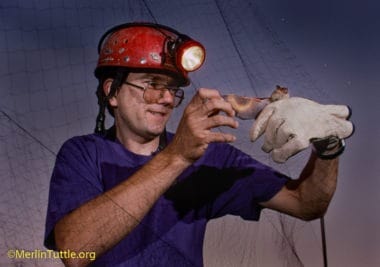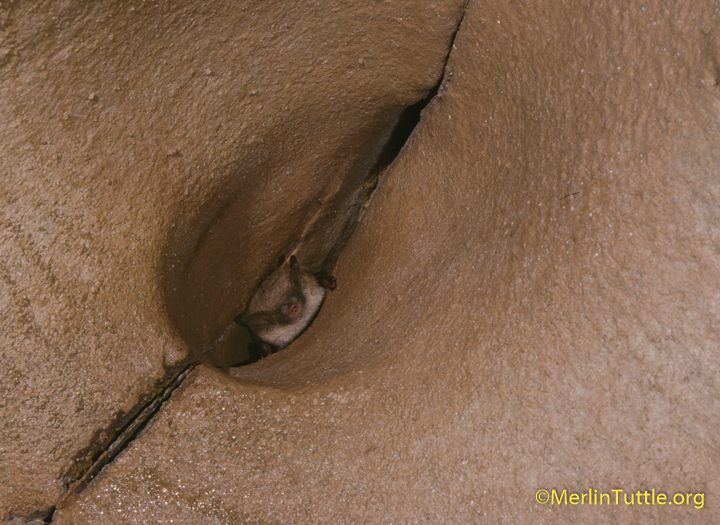The Costs of Bat Decline
Can we afford to lose bats? A recent study by Eyal Frank of the University of Chicago reveals that the dramatic decline in U.S. bat
Conservation and Ecology of Pennsylvania’s Bats, edited by C.M. Butchkoski, D.M. Reeder, G.G. Turner, and H.P. Whidden. 2017, is a publication of the Pennsylvania Academy of Science. Twenty-eight contributors cover a wide variety of conservation-relevant topics. It summarizes the key ecological and economic roles of bats and traces the history of bat research and conservation efforts in Pennsylvania, which has one of America’s finest records of conserving bats.
A Wind Energy Voluntary Cooperation Agreement is reported to have gained beneficial results. However, the environmental review process does not cover most of the state’s species. And at least one of the state’s largest companies has refused to participate. The potentially serious, yet inadequately documented wind energy impacts on bats remain as unresolved threats.

This publication’s greatest strength is in providing the best documentation I’ve seen on the impact of White-nose Syndrome (WNS). It simultaneously tracks population changes based on hibernation and nursery roost counts and extensive netting and trapping in summer habitats, in addition to tracking the spread across North America. Alarming losses, often exceeding 90% are reported, comparing trends for formerly abundant, but highly vulnerable cave hibernators versus less affected and unaffected species.
Populations of mildly affected big brown bats (Eptesicus fuscus) and unaffected red bats (Lasiurus borealis) appear to have grown, perhaps due to decreased competition from decimated species. Nevertheless, I was concerned to see an opposite trend for hoary bats (Lasiurus cinereus), the species most often killed by wind turbines. By 2013, capture rates for hoary bats had declined to just 83% of those seen prior to the arrival of WNS, despite apparently being unharmed by this new threat. This may be an early warning of unsustainable impacts of wind turbine kills.

The finding that many of the state’s cave hibernators appear forced to use sites where roost temperatures are insufficiently low or stable for ideal energy conservation may serve as partial explanation for extreme susceptibility to WNS. Most of America’s best hibernation sites, those with the widest ranges of stable temperatures (extra-large and multi-entranced), had been lost to bat use long before the arrival of WNS, since these are often the ones most heavily used by humans.
I agree that restoring and protecting such sites is likely the most important thing we can do to help rebuild populations. This was supported by evidence of surviving bats moving into roosts of lower temperature. I was also encouraged to see evidence of apparent recovery beginning among even the hardest hit species and concur that hibernation site disturbance must be kept to an absolute minimum during this period of hoped for population rebuilding.
Conservation and Ecology of Pennsylvania’s Bats is available through:
OR
Speleobooks is an excellent source for virtually any book having to do with bats. This independent book and gift store has a long history of supporting bat conservation.
Love our content? Support us by sharing it!
Can we afford to lose bats? A recent study by Eyal Frank of the University of Chicago reveals that the dramatic decline in U.S. bat
“Just like the old days, eh Heather?” Kent softly clicks his tally counter as he sits in his folding chair on the other side of
An important new study, recently published in Science and widely covered by major newspapers like The Guardian, The Washington Post, and The New York Times, has
It’s summertime (in the Northern Hemisphere) and the evening skies are alive with activity. As the sun sets, bugs are flying around and bats are
2024 © Merlin Tuttle’s Bat Conservation. All rights reserved.
Madelline Mathis has a degree in environmental studies from Rollins College and a passion for wildlife conservation. She is an outstanding nature photographer who has worked extensively with Merlin and other MTBC staff studying and photographing bats in Mozambique, Cuba, Costa Rica, and Texas. Following college graduation, she was employed as an environmental specialist for the Florida Department of Environmental Protection. She subsequently founded the Florida chapter of the International DarkSky Association and currently serves on the board of DarkSky Texas. She also serves on the board of Houston Wilderness and was appointed to the Austin Water Resource Community Planning Task Force.
Michael Lazari Karapetian has over twenty years of investment management experience. He has a degree in business management, is a certified NBA agent, and gained early experience as a money manager for the Bank of America where he established model portfolios for high-net-worth clients. In 2003 he founded Lazari Capital Management, Inc. and Lazari Asset Management, Inc. He is President and CIO of both and manages over a half a billion in assets. In his personal time he champions philanthropic causes. He serves on the board of Moravian College and has a strong affinity for wildlife, both funding and volunteering on behalf of endangered species.